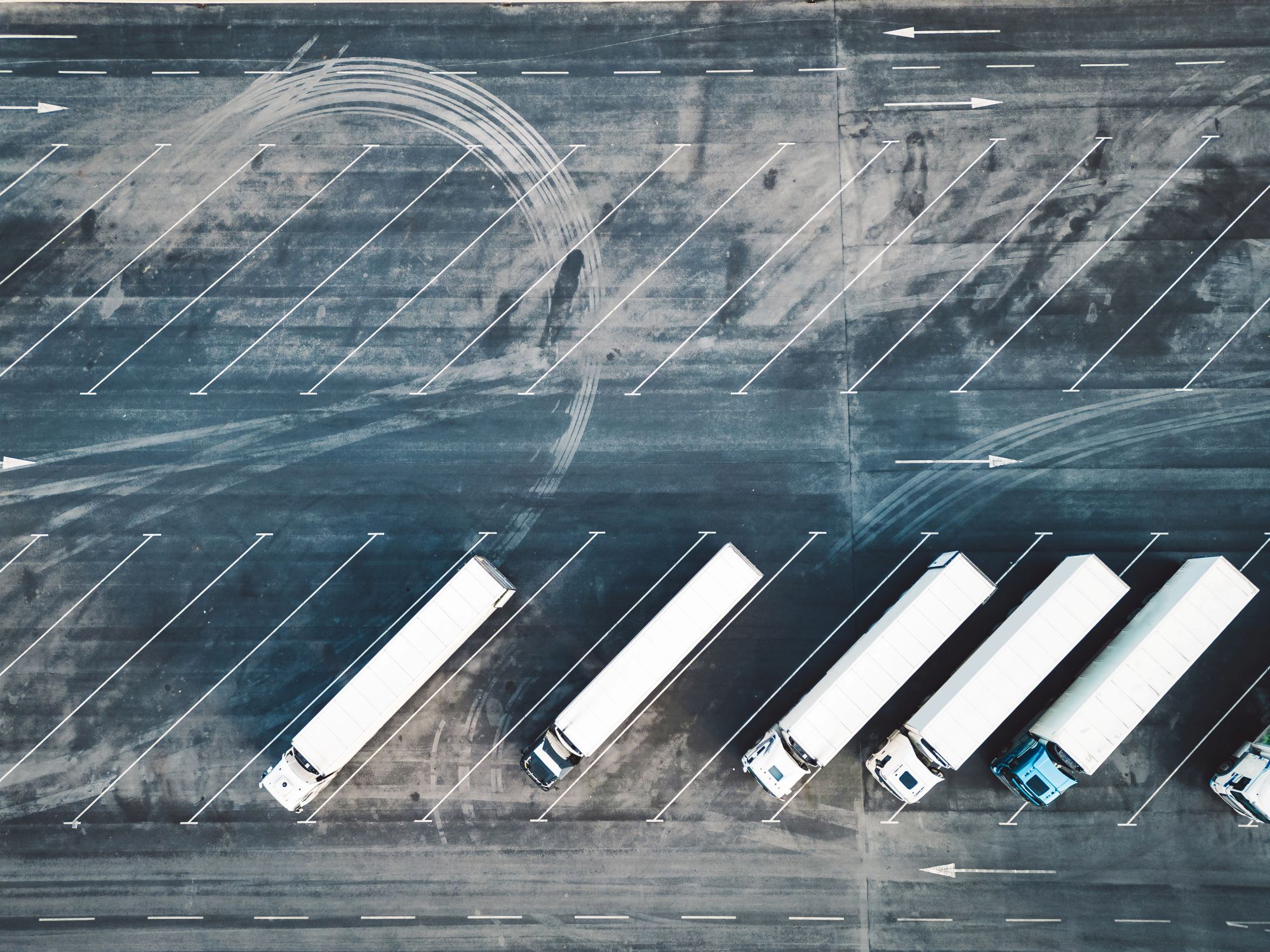
Guest
Zones à faibles émissions en Espagne : Ce que les opérateurs de flotte doivent savoir
Créée: 03/10/2025
•
Mise à jour : 08/10/2025
D'ici à la fin de 2025, 149 villes espagnoles - de Madrid et Barcelone à des centres touristiques comme Valence, Alicante et Benidorm - restreindront l'accès des véhicules à fortes émissions. Pour les opérateurs de flottes, cela signifie de nouveaux risques de conformité, des mises à niveau coûteuses et des calendriers de livraison plus serrés.
Les zones à faibles émissions (Zonas de Bajas Emisiones, ou ZBE) espagnoles s'inscrivent dans le cadre d'une initiative européenne plus large visant à améliorer la qualité de l'air et à réduire les émissions dues aux transports. Elles fonctionnent déjà dans les grandes villes du pays et sont sanctionnées par des amendes pouvant aller jusqu'à 200 euros, les règles variant d'une ville à l'autre.
Dans ce guide, nous expliquons comment fonctionnent les ZBE, quelles sont les catégories de véhicules concernées et ce que les opérateurs doivent faire pour maintenir leur flotte sur la route.
Règles ZBE et catégories de véhicules
Les ZBE sont introduites en vertu de la législation espagnole dans les villes de plus de [50 000 habitants] (https://transporteprofesional.es/noticias-actualidad-transporte-logistica/transporte-de-mercancias/zonas-de-bajas-emisiones-impacto-y-desafios-para-el-transporte-profesional) (et dans celles de plus de 20 000 habitants où la qualité de l'air est particulièrement mauvaise), afin d'améliorer la qualité de l'air urbain et de soutenir les objectifs de l'UE en matière de climat.
L'accès à une ZBE est déterminé par le badge environnemental (distintivo ambiental) délivré par la Direction générale du trafic (DGT).
Les catégories sont les suivantes
Zero (badge bleu) :
Accès complet
● Véhicules 100% électriques (BEV)
● Véhicules à pile à combustible à hydrogène (FCEV)
● Hybrides rechargeables avec une autonomie électrique d'au moins 40 km.
Eco (badge vert/bleu) :
Accès généralement illimité
● Hybrides standard (HEV)
● Hybrides rechargeables ayant une autonomie électrique inférieure à 40 km.
● Véhicules fonctionnant au gaz (GNC/GNL/GPL)
C (badge vert) :
Accès avec certaines restrictions de temps/de zone
● Véhicules à essence : Euro 4/5/6 (généralement à partir de 2006)
● Véhicules diesel : Euro 6 (généralement à partir de 2014)
B (badge jaune) :
De plus en plus restreint, souvent interdit aux heures de pointe
● Véhicules à essence : Euro 3 (typiquement 2000-2005)
● Véhicules diesel : Euro 4-5 (généralement 2006-2013)
Pas de badge :
Généralement banni de toutes les ZBE
● Véhicules à essence ne répondant pas aux normes Euro 3
● Véhicules diesel ne répondant pas aux normes Euro 4
Les véhicules à essence inférieurs à la norme Euro 3 et les diesels inférieurs à la norme Euro 4 sont généralement interdits dans les ZBE, bien que les restrictions varient d'une ville à l'autre.
Il est important de noter que les véhicules étrangers doivent être enregistrés auprès des conseils municipaux locaux avant d'entrer dans une ZBE, même s'ils répondent à des normes Euro équivalentes. En l'absence d'immatriculation, les véhicules conformes peuvent se voir infliger des amendes automatiques, ce qui est devenu un problème courant pour les transporteurs internationaux opérant en Espagne.

Zones concernées par les ZBE
Madrid et Barcelone ont mis en place des ZBE depuis plusieurs années, avec des règles très spécifiques et de vastes zones de couverture. D'ici à la fin de 2025, le système s'étendra à 149 villes, y compris des villes plus petites et des destinations touristiques telles que Benidorm, Valence, Séville et Alicante.
Certaines villes sont encore en train de mettre en œuvre ou d'appliquer progressivement leurs zones, avec des périodes de transition en place (par exemple, des avertissements jusqu'à la fin de 2025 à Valence et Benidorm). D'autres, comme [Málaga] (https://cadenaser.com/andalucia/2025/09/18/malaga-sancionara-en-la-zona-de-bajas-emisiones-a-partir-del-uno-de-diciembre-ser-malaga/), commenceront à infliger des amendes aux véhicules non conformes à partir de décembre 2025.
Il convient de noter que les villes peuvent avoir des règles différentes, certaines autorisant des véhicules non conformes pour des services essentiels. Il est donc important de connaître les règles d'une ville spécifique avant d'envoyer un véhicule.
L'Espagne n'est pas la seule : plus de 320 villes européennes ont mis en place des LEZ, le système français Crit'Air, le système allemand Umweltzonen et le système britannique ULEZ étant parmi les plus établis. Pour les transporteurs transfrontaliers, cela crée un patchwork de règles, d'autocollants et de sanctions qui augmentent les risques et les coûts de mise en conformité.
Ce que les opérateurs de flotte doivent faire
Vous devez vous assurer que vos véhicules portent le badge DGT approprié ou qu'ils sont immatriculés s'ils sont immatriculés à l'étranger.
Les amendes pour non-conformité sont généralement fixées à [200 € par infraction] (https://www.sertrans.es/zonas-de-bajas-emisiones/), bien qu'elles puissent varier d'une municipalité à l'autre. Des villes comme Madrid et Barcelone ont déjà commencé à infliger ces amendes par l'intermédiaire de systèmes de reconnaissance automatique des plaques d'immatriculation (RAPI).
Questions pour les gestionnaires de flotte
Renouvellement de la flotte et coûts
De nombreuses entreprises de logistique se heurtent à des obstacles parce que les vieux camions diesel sont désormais interdits ou limités dans les villes. En fait, [l'âge moyen du parc de véhicules de transport de marchandises en Espagne est de 14 ans] (https://www.acea.auto/figure/average-age-of-eu-vehicle-fleet-by-country/). Cela signifie qu'un nombre important de véhicules ne sont pas conformes et doivent être remplacés si les transporteurs veulent entrer dans les ZBE.
Le prix des véhicules ajoute à la pression : un [camion lourd électrique peut coûter trois fois plus cher qu'un équivalent diesel] (https://ekoenergetyka.com/blog/electric-vs-traditional-trucks-a-cost-of-ownership-comparison/#:~:text=Economic%20Competitiveness%20of%20Electric%20Trucks,cheaper%20in%20the%20long%20run :), tandis que les [camions à hydrogène] (https://thundersaidenergy.com/downloads/is-natural-gas-a-competitive-truck-fuel/#:~:text=Hydrogen%20trucks%20have%20been%20proposed,and%20Hydrogen%20%E2%80%94%20across%2035%20variables.) sont encore plus onéreux.
CETM-Madrid, la Confédération espagnole du transport de marchandises, estime que les dépenses cumulées pour les entreprises de fret routier basées à Madrid s'élèvent à environ 1,3 milliard d'euros (https://transporteprofesional.es/ultimas-noticias/cetm-madrid-reclama-modificar-el-calendario-de-acceso-a-las-zonas-de-bajas-emisiones-a-los-camiones) et appelle à des ajustements de délais et à un soutien accru.
Compression du temps
Les données montrent que les changements ont un impact sur les délais de livraison. Une enquête récente menée auprès d'entreprises situées dans des zones pilotes a révélé que [36,7 % d'entre elles ont fait état de délais de livraison plus longs et d'une augmentation des frais d'expédition] (https://www.jiem.org/index.php/jiem/article/download/6902/1089).
Les embouteillages sont également fréquents pendant les fenêtres de livraison restreintes (8-10 heures), lorsque de nombreux opérateurs se disputent l'accès. Environ [83% des entreprises interrogées] (https://www.jiem.org/index.php/jiem/article/download/6902/1089) ont également cité le manque d'aires de chargement/déchargement adéquates comme l'un des principaux facteurs de retard.
Cet effet de "compression du temps" - où les livraisons sont effectuées en moins d'heures - crée des goulets d'étranglement aux abords des zones, ce qui augmente la probabilité d'arrivées tardives et de perturbations des chaînes d'approvisionnement.
Pressions sur le personnel
Les perturbations des horaires vont au-delà de l'acheminement des véhicules et s'étendent à la gestion du personnel. L'approche de Barcelone à l'égard des ZBE illustre le défi : la ville offre des [créneaux de livraison de nuit de deux heures] (https://www.rhenus.group/es/en/rhenus-group/rhenus-in-spain/blog/blog-detail/why-does-barcelona-plan-to-multiply-night-time-deliveries-by-seven-by-2030/) (21:00-07:00) pour réduire la congestion diurne, mais les conventions collectives espagnoles stipulent que la rémunération du travail de nuit est assortie de primes d'environ 25 %.
Les opérateurs de flotte sont donc confrontés à un choix difficile : accepter les encombrements et les retards pendant la journée ou absorber les augmentations des coûts de main-d'œuvre pour les opérations nocturnes.
Les avantages environnementaux de l'introduction des ZBE
Malgré les difficultés, les ZBE apportent des avantages évidents en matière de santé publique. Des études sur la LEZ de Madrid Central ont enregistré des réductions significatives du dioxyde d'azote (NO₂) à l'intérieur de la zone. Des études européennes plus larges montrent que les émissions de suie diminuent de [47 % et les particules ultrafines de 56 % après le déploiement des LEZ] (https://urbanaccessregulations.eu/low-emission-zones-main/impact-of-low-emission-zones).
Ces réductions se traduisent directement par une amélioration de la qualité de l'air, une diminution des maladies respiratoires et une réduction des admissions à l'hôpital. Pour les citadins - et les conducteurs qui passent des heures dans les embouteillages - les avantages pour la santé sont tangibles, même s'ils sont gênants.
Soutenir les conducteurs et les opérateurs dans toute l'Europe
"Les zones à faibles émissions sont là pour rester", commente Raqual Martinez, directeur des ventes pour l'Europe chez SNAP. "Le défi pour notre communauté est de s'adapter sans compromettre l'efficacité ou le bien-être des conducteurs. Chez SNAP, nous nous engageons à soutenir les flottes en Espagne et dans toute l'Europe, en les aidant à transformer les changements réglementaires en avantages opérationnels."
Bien que nous ne puissions pas changer les règles de la LEZ, notre application intruck simplifie la vie sur la route. Les conducteurs peuvent l'utiliser pour trouver et réserver des parkings sécurisés pour les camions et des stations de lavage, voir quelles sont les installations disponibles à chaque arrêt et planifier des pauses adaptées à des fenêtres de livraison plus serrées, qu'il s'agisse d'entrer dans Madrid, de contourner Barcelone ou de traverser les frontières sur des itinéraires plus longs.
Téléchargez dès aujourd'hui l'application [intruck app] (https://intruckapp.com/download/) pour faciliter les opérations dans le paysage évolutif du transport en Espagne.



